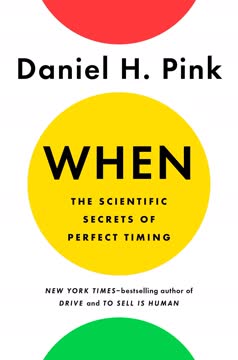重点摘要
1. 创意无处不在,等待被发现
“真正的创意不在死去的艺术博物馆里。真正的创意是活的,每天都在发生。”
创意是无处不在的。 它可以在意想不到的地方找到,从日常问题解决到创新的商业策略。关键是培养在各种情境中识别和培育创意思维的能力。
锻炼创意肌肉:
- 观察日常生活中的创意
- 讨论和分析创意解决方案
- 挑战传统思维
- 练习重新解释熟悉的情境
通过积极寻找和参与周围的创意,我们可以增强自己的创意能力,并将其应用于生活和工作的各个方面。
2. 真正的创意通过不同的思维方式解决问题
“如果你不能阻止它,就引导它。”
重新定义问题。 真正的创意通常涉及从新的角度处理挑战,而不是遵循传统的解决方案。这可能意味着接受限制或将看似的障碍转化为机会。
创意解决问题的例子:
- 将坑洼变成艺术以更快地修复它们
- 利用一个国家对俄罗斯的恐惧来提升其全球地位
- 将被遗弃的狗转化为囚犯的康复工具
通过转变我们的思维方式,从不同的角度看待问题,我们可以发现最初不明显的创新解决方案。
3. 有效的沟通要用受众的语言
“你用受众的语言与他们交流,而不是你的语言。这是进入他们心灵的唯一途径。”
了解你的受众。 成功的沟通需要理解目标受众的视角、需求和动机。这涉及调整你的信息和传递方式,以引起他们的共鸣。
以受众为中心的沟通策略:
- 研究受众的背景和兴趣
- 使用可关联的类比和例子
- 避免行话和内部术语
- 用代表性受众测试你的信息
通过优先考虑受众的视角,沟通者可以创造更有影响力和说服力的信息,真正与目标受众产生共鸣。
4. 影响力是成功广告的关键
“引起行动的是引起注意的东西。引起注意的是被看到的东西。”
要么脱颖而出,要么被忽视。 在信息和广告泛滥的世界中,创造影响力对于吸引受众注意力和推动行动至关重要。这通常需要大胆、意外或颠覆性的方式。
有影响力的广告元素:
- 视觉独特性
- 情感共鸣
- 意外或惊喜元素
- 清晰、难忘的信息
- 与受众需求或欲望的相关性
通过优先考虑广告的影响力,营销人员可以突破噪音,创造不仅被注意到而且被记住和采取行动的广告活动。
5. 数据和技术是工具,而不是解决方案
“永远不是关于技术和数据,而是关于人。”
人类洞察是不可替代的。 虽然数据和技术可以提供有价值的信息和能力,但它们应该被视为支持人类创意和决策的工具,而不是替代品。
平衡数据和人类洞察:
- 用数据来告知,而不是支配创意决策
- 结合定量和定性研究
- 认识到数据和算法的局限性
- 优先考虑人类的同理心和直觉来理解受众
通过保持以人为本的思维,营销人员和广告商可以有效利用数据和技术,而不失去驱动成功沟通的基本人类元素。
6. 恐惧和不适可以推动创新
“真正的颠覆是不舒服的。”
接受不适。 真正的创新通常需要走出舒适区,挑战既定规范。恐惧和不适可能是你在探索新领域和推动边界的指标。
利用恐惧和不适:
- 认识到恐惧可能是机会的标志
- 鼓励有计划的冒险
- 创建安全的实验和失败空间
- 将挑战重新定义为成长的机会
通过接受不适并将恐惧作为动力而不是阻碍,个人和组织可以推动自己发现真正创新的解决方案和方法。
7. 创意需要质疑假设和幻觉
“你不能改变事物而不改变它们。”
挑战现状。 创意思维通常涉及识别和质疑深信不疑的假设和幻觉。这一过程可以揭示新的可能性和创新机会。
质疑假设的策略:
- 定期重新审视和挑战“常识”
- 寻求多样化的观点和意见
- 试验逆转或改变既定流程
- 寻找与普遍信念相矛盾的例子
通过培养健康的怀疑和好奇心,个人可以摆脱限制性信念,发现其他人可能忽视的创意解决方案。
8. 战略涉及牺牲和专注
“战略就是牺牲。”
无情地优先排序。 有效的战略通常需要放弃多余的元素,专注于真正重要的东西。这一简化和专注的过程可以带来更强大和有影响力的结果。
实施战略专注:
- 确定核心目标和优先事项
- 消除或最小化非必要元素
- 将资源集中在关键影响领域
- 不断重新评估和完善战略选择
通过接受战略牺牲的概念,组织可以创造更专注和有效的方法,最大化其影响和资源。
9. 理解人类行为是营销成功的关键
“没有故事,它只是一个普通的石头。有了故事和武装警卫,它成了他们到镇上必须看的东西。”
利用人类心理。 成功的营销和广告通常依赖于对人类行为、动机和决策过程的深刻理解。通过利用这些洞察,营销人员可以创造更具吸引力和有效的广告活动。
应用行为洞察:
- 用讲故事来创造情感联系
- 利用社会证明和权威
- 理解和应对认知偏见
- 在适当时创造稀缺感或排他性
通过将营销策略建立在对人类行为的细致理解上,广告商可以创造更有共鸣和说服力的广告活动,推动实际结果。
10. 广告中的创意必须与普通人产生共鸣
“我们所做的一切是为了同侪的认可,而不是为了街上的人。”
保持现实。 有效的广告需要与普通人的日常经验和视角保持联系。失去这种现实感可能导致无效或脱离实际的广告活动。
保持联系的策略:
- 定期与不同群体的消费者互动
- 进行实地研究并观察现实世界的行为
- 用非行业人士测试想法和概念
- 避免行业回音室和群体思维
通过优先考虑与普通人的真实联系,广告商可以创造更具关联性、影响力和有效的广告活动,与目标受众产生共鸣。
最后更新日期:
FAQ
What's "Creative Blindness (And How To Cure It)" about?
- Exploration of Creativity: The book delves into the concept of "creative blindness," where individuals fail to see creative opportunities around them.
- Real-life Stories: It uses real-life stories to illustrate how creative thinking can solve problems in unexpected ways.
- Corkscrew Thinking: The author introduces the idea of "corkscrew thinking," a method of approaching problems from unconventional angles.
- Practical Advice: It offers practical advice on how to develop and harness creative thinking in everyday life.
Why should I read "Creative Blindness (And How To Cure It)" by Dave Trott?
- Enhance Creativity: The book provides insights into enhancing your creative thinking skills, which are valuable in both personal and professional settings.
- Engaging Stories: It uses engaging and relatable stories to illustrate creative problem-solving, making it an enjoyable read.
- Practical Applications: The advice is practical and applicable to real-world situations, making it useful for anyone looking to improve their creative abilities.
- Unique Perspective: Dave Trott's unique perspective on creativity challenges conventional thinking and encourages readers to think differently.
What are the key takeaways of "Creative Blindness (And How To Cure It)"?
- Creativity is Everywhere: Creativity can be found in everyday situations if you know how to look for it.
- Corkscrew Thinking: Approaching problems from unconventional angles can lead to innovative solutions.
- Practical Creativity: Creativity is not just for artists; it can be applied in business, problem-solving, and daily life.
- Overcoming Creative Blindness: By exercising your creative muscle, you can overcome creative blindness and see opportunities where others see obstacles.
What is "corkscrew thinking" as described in "Creative Blindness (And How To Cure It)"?
- Non-linear Approach: Corkscrew thinking involves approaching problems in a non-linear, unconventional way.
- Problem as Opportunity: It encourages seeing problems as opportunities for creative solutions.
- Historical Examples: The book provides historical examples, such as Bletchley Park and the Sten gun, to illustrate corkscrew thinking.
- Secret Weapon: Described as a secret weapon in creativity, it can give individuals a competitive edge.
How does Dave Trott suggest overcoming creative blindness?
- Spot Creativity: Learn to spot creativity in everyday situations, from work to daily routines.
- Exercise Creativity: Like a muscle, creativity needs to be exercised regularly to grow stronger.
- Discuss and Share: Engage in discussions about creativity to broaden your perspective and influence others.
- Practical Exercises: The book offers practical exercises and examples to help readers develop their creative skills.
What are some real-life examples of creative thinking in "Creative Blindness (And How To Cure It)"?
- Washington Redskins Sting: A sting operation used free game tickets to capture fugitives, demonstrating creative problem-solving.
- Friendship Benches in Zimbabwe: Grandmothers were trained to provide therapy, turning a lack of psychiatrists into an opportunity.
- Vulcan, West Virginia Bridge: A creative letter to the Russian embassy led to funding for a much-needed bridge.
- Girl Scout Cookie Sales: A Girl Scout sold cookies outside a marijuana dispensary, capitalizing on the munchies effect.
What is the significance of "The Ploughman’s Lunch" story in the book?
- Invented Tradition: The Ploughman’s Lunch was a marketing invention, not a historical tradition.
- Repackaging History: It shows how history can be repackaged to create a compelling narrative.
- Marketing Lesson: Demonstrates the power of storytelling in marketing to create perceived value.
- Cultural Impact: The story became part of national memory, illustrating the impact of creative marketing.
How does "Creative Blindness (And How To Cure It)" address the role of fear in creativity?
- Fear as a Tool: The book suggests that fear can be a valuable tool for entrepreneurs and creative thinkers.
- Steve Jobs Example: Steve Jobs used fear of competition to drive innovation, leading to the creation of the iPhone.
- Evolutionary Advantage: Fear is presented as an evolutionary advantage that keeps species, and businesses, alert and competitive.
- Embrace Fear: Encourages readers to embrace fear as a motivator for creative solutions.
What are some of the best quotes from "Creative Blindness (And How To Cure It)" and what do they mean?
- "Creativity is your legal unfair advantage." This quote emphasizes that creativity can give you a competitive edge in a fair and legal way.
- "The difficulty lies not so much in developing new ideas, as in escaping from the old ones." It highlights the challenge of breaking free from conventional thinking to embrace new ideas.
- "Strategy is sacrifice." This quote underscores the importance of focusing on what truly matters and letting go of the rest to achieve strategic goals.
- "Simple is harder than complicated." It suggests that achieving simplicity requires more effort and creativity than complexity.
How does Dave Trott illustrate the concept of "creative impact" in the book?
- Barney the Parrot: A parrot's foul language brought attention to a wildlife sanctuary, illustrating how being different can create impact.
- Show Don’t Tell: The book emphasizes the power of demonstration over claims, using historical advertising examples.
- Unfriendly Fire: A story about the Austrian army highlights how overthinking and fear can lead to self-defeat, stressing the importance of clear communication.
- Advertising Lessons: The book provides lessons on how impactful advertising can change behavior and perception.
What is the role of "practical creativity" in "Creative Blindness (And How To Cure It)"?
- Triage Thinking: Focus on where your efforts will make the most difference, akin to medical triage.
- Pareto Principle: Apply the 80/20 rule to focus on the most impactful areas of your work or business.
- Problem Solving: View problems as opportunities for creative solutions, as demonstrated by various real-life examples.
- Simplification: Emphasizes the power of simplification in achieving creative breakthroughs.
How does "Creative Blindness (And How To Cure It)" address the concept of "creative surprises"?
- Unexpected Outcomes: The book discusses how unexpected outcomes can lead to creative breakthroughs.
- Backfire Effect: Illustrates how perceived threats can drive demand, as seen in the gun industry under Obama.
- Boys with Toys: A story about a Russian submarine highlights the importance of understanding different perspectives.
- Hold On a Minute: Myer's creative approach to hold music turned a negative experience into a positive one, showing how small changes can have a big impact.
评论
《创意盲点(及其治愈方法)》因其收录的短小而富有启发性的故事而备受赞誉,这些故事展示了创意问题解决的过程。读者们欣赏这本书引人入胜的写作风格、实用的见解以及来自各个领域的多样化例子。许多人认为这本书发人深省,适用于广告和营销之外的领域。该书因其激发创意和鼓励跳出框架思考的能力而受到称赞。尽管一些评论者指出书中轶事有重复之嫌,但大多数评论者认为这本书是一本令人愉快且有价值的读物,适合任何对培养创意思维技能感兴趣的人。
Similar Books















